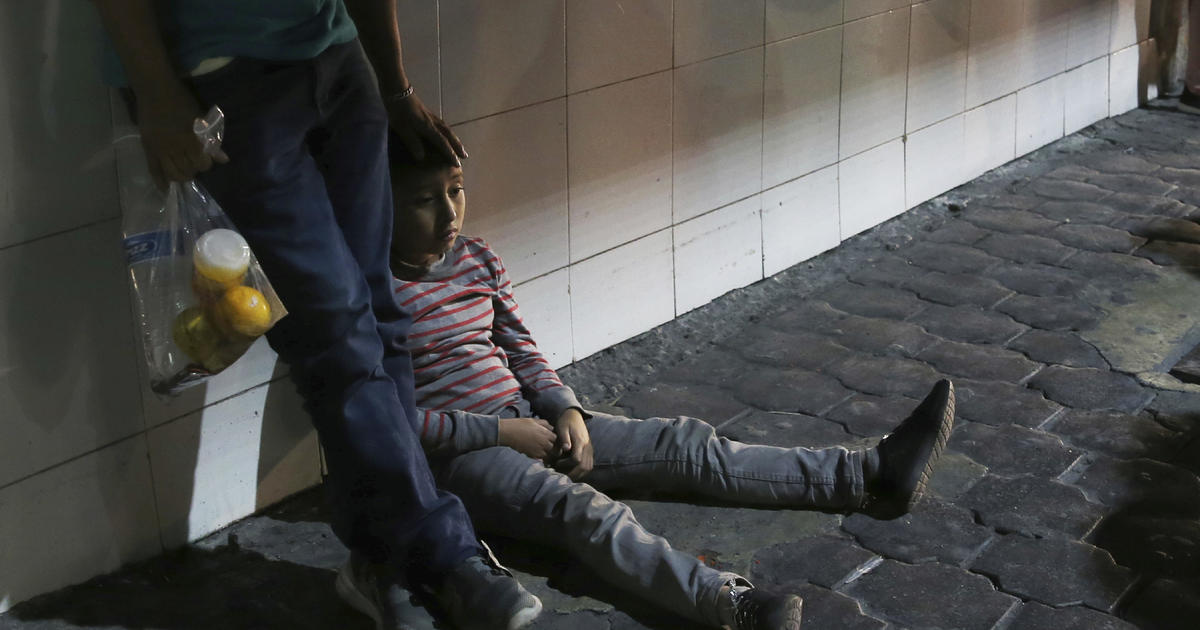A federal judge raised concerns Wednesday about the Trump administration’s policy of quickly expelling migrants during the coronavirus pandemic, ordering border officials to halt the removal of an unaccompanied teenage boy from Honduras.
For the second time this month, Judge Carl Nichols of the U.S. District Court in Washington, a conservative who was named to the bench by President Trump, blocked the deportation of the 16-year-old Honduran boy at the center of one of first legal challenges against the border expulsions. The administration has justified the expulsions under an emergency order issued by the Centers for Disease Control and Prevention (CDC).
During a hearing Wednesday, Nichols said the American Civil Liberties Union (ACLU) and other groups representing the migrant child were likely to succeed in arguing that public health law does not authorize expulsions. Even if the CDC could delegate an expulsion authority to border officials, Nichols said he did not believe those powers override the legal safeguards Congress created for unaccompanied children.
The CDC directive cites a public health law first enacted in the late 19th century and recodified during World War II. It authorizes the surgeon general to bar the “introduction of persons or property” that pose the danger of introducing a communicable disease into the U.S.
Since the law lacks any provisions for removals, the top ACLU attorney in the case, Lee Gelernt, argued during the hearing that the CDC order can’t be used to expel people. Deportations should take place under immigration laws, which have provisions barring the entry of those with communicable diseases, Gelernt contended.
Jean Lin, a Justice Department attorney representing the administration, disagreed, saying public health law includes an implied power of “physical removal,” according to a transcript of the hearing.
Both Lin and Nichols noted that the public health law is broad, with the Justice Department lawyer arguing it could hypothetically greenlight the removal of U.S. citizens, despite the constitutional concerns of such a policy.
But Nichols expressed doubts about the purported deportation power of the law cited by the CDC order.
“It seems to me, though, that there’s a difference between barring the entry of persons, including U.S. citizens” and “authorizing the removal of persons who have made it into the physical United States,” the judge said.
Pressed by Nichols about the legal protections that govern the care of migrant children, Lin said public health law generally supersedes all other laws during a pandemic. She said there was “no carve out for children” because the CDC determined that adults and minors are part of a “collective group” that presents a public health risk.
In his oral ruling, Nichols disagreed.
“Even if the power to remove were read by section 265, the plaintiff has likelihood of success because the provision, in the Court’s view, should be harmonized, to the maximum extent possible, with immigration statutes, including those already referenced that grant special protections to minors and also those immigration statutes that deal with communicable diseases and quarantines,” he said.
Nichols ordered the government to keep the 16-year-old boy in the U.S. while he rules on the merits of the case.
Earlier this month, the ACLU and the Texas Civil Rights Project filed another lawsuit on behalf of 13-year-old girl from El Salvador who was expelled from the southern border in April and denied the opportunity to request asylum alongside her mother, who lives in New York.
“This a critically important ruling because it went to the heart of the administration’s claim that it can do an end-run around the immigration laws and simply expel people, including children, without any process,” Gelernt, the ACLU attorney, told CBS News.
Citing the CDC order, now in place indefinitely, border officials carried out nearly 43,000 expulsions in May, April and the last 11 days of March. Among those expelled are hundreds of unaccompanied migrant children — a population that Congress exempted from speedy deportations through an anti-trafficking law in 2008.
Under that same law, border officials must generally transfer most unaccompanied minors to the Office of Refugee Resettlement within three days of encountering them. The agency has a network of shelters and other housing facilities where migrant children stay before being released to family members in the U.S. or other sponsors.
Since the CDC took effect in late March, the Office of Refugee Resettlement has received few referrals of unaccompanied minors from border officials, admitting just 39 new children in May, according to government data obtained by CBS News.
The Trump administration has portrayed the CDC order as an emergency policy designed to block the entry of migrants who could spread the coronavirus inside holding facilities and strain health care institutions.
While the lawsuits filed so far against the expulsions policy seek relief for two migrant children, advocates hope they will be successful in arguing that the CDC order is illegal, especially because of the way it is being used to summarily deport unaccompanied minors.
Advocates are asking the district court in Washington to order the government to allow the Honduran teen to reunite with his father, who lives in Texas and has a pending asylum case.
